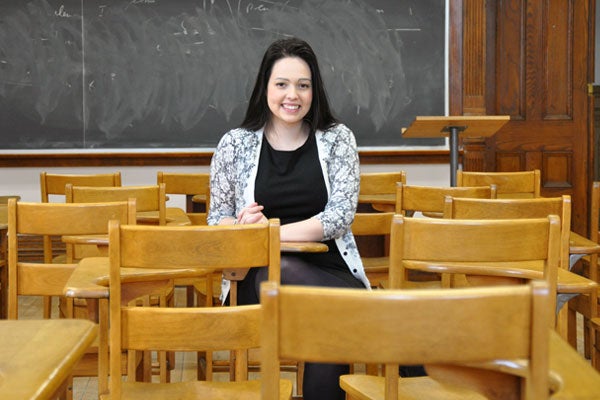
The puzzle apprentice: undergrad designs brainteasers, scavenger hunts
Published: February 10, 2014
When Stacy Costa was a young child, her parents would try to stump her with puzzles. Today, the fourth-year undergrad at the University of Toronto is making puzzles her career.
“Few other kinds of mental challenges have had as much broad appeal as puzzles and games have across time and culture,” says Costa, who studies anthropology and semiotics. “While puzzles never present a ‘problem situation’ in a straightforward way, they are not based on literal thought, but bring out the characteristics of associative, inferential and analogical thinking.
"Doing a puzzle will always reward you whether or not you finish it; the more you enjoy using your brain, the more you’ll get out of it.”
When Costa realized anthropology professor Marcel Danesi offered a course on puzzles, it opened up another aspect of her university experience. Once he gave the students a choice of writing an essay or creating a puzzle, and she was the only one in the class to tackle a puzzle. She came up with a combination of Sudoku and a Rubik’s cube and named it Rubikuku.
“The Rubikuku was the first direct experience which showed me the true benefits of research,” Costa says.
Costa took an avid interest in Danesi’s class. Now the Victoria College student works with him to create three weekly puzzles for the Toronto Star.
“She had me on my toes constantly, asking relevant questions and providing often significant insights that led me to revise a number of ideas and thus my writing on puzzles,” Danesi says of Costa.
(Listen to a CBC Radio interview with Costa.)
Costa was recently hired to design an online scavenger hunt for Research Matters, a public outreach initiative by the Council of Ontario Universities. The hunt is part of a campaign to show the public the vast and unique research being done in the 21 universities in the province. Costa designed an acrostic puzzle that represents each university by providing a clue for each day in February. Each clue is presented in a video discussion of a researcher’s work. All 21 words will fit together into a phrase. Any university student could win $500 if they complete the puzzle.
“University research affects our lives in a multitude of ways, especially in achieving a better quality of life,” she says.
“This is demonstrated through the scavenger hunt. The ideas being researched need to be publicized, and will fascinate many who may not be normally exposed to these great discoveries by hardworking researchers.”
Besides working with a marketing company to design puzzles for food products on a nationwide campaign, Costa has been focusing on applying to masters programs at U of T and preparing to teach a course at the School of Continuing Studies this fall titled “Memory and Imagination: the Role of the Enigma.”
“I want to study the effects of puzzles on the brain, or the effects of puzzle in relation to culture and language,” she says. “I hope to eventually develop a career which would allow me to create puzzles that could lead to better learning strategies for children, especially in areas in which they have difficulties, or to continue to create puzzles for the public in campaigns, a newspaper or an app.
“U of T has allowed me to flourish in a unique research experience because they are ahead of the curve in modern research,” she says. “U of T’s unique course offerings may seem obscure and unusual but academically, they allow students to develop critical thinking skills for the workforce and their lives.”
Read about Costa in the Toronto Star.
Jessica Lewis is a writer with the Faculty of Arts & Science at the University of Toronto.



